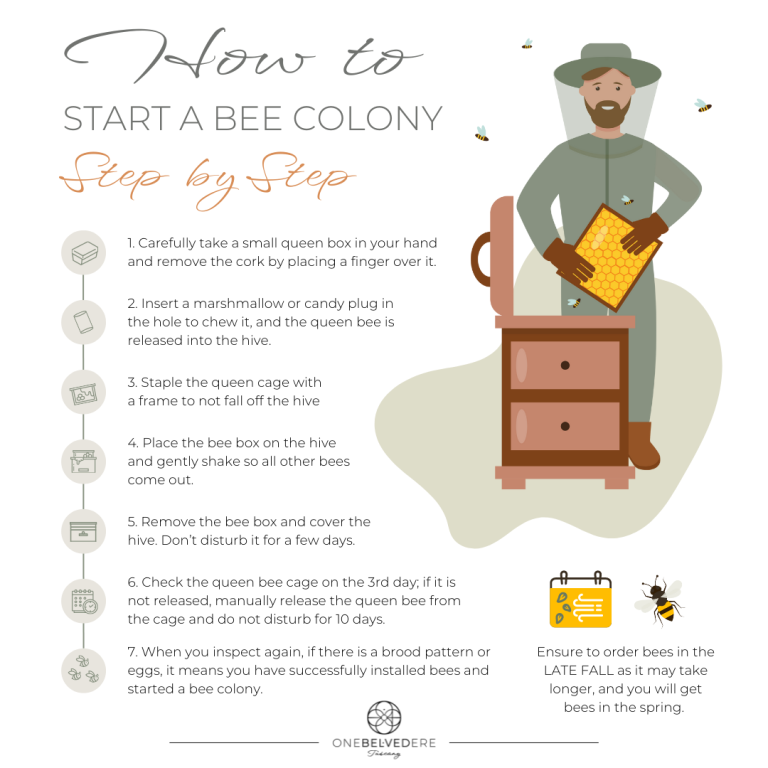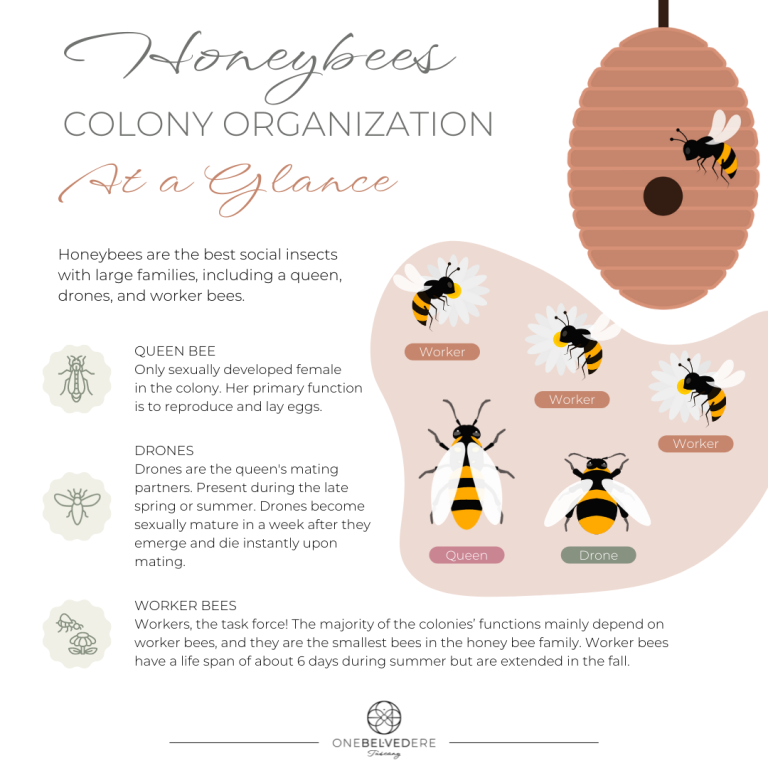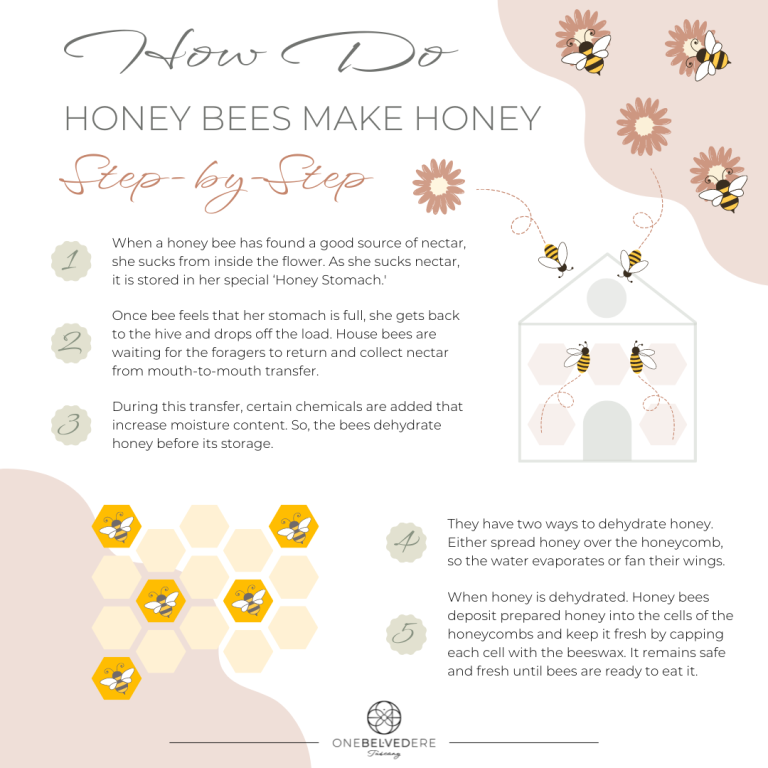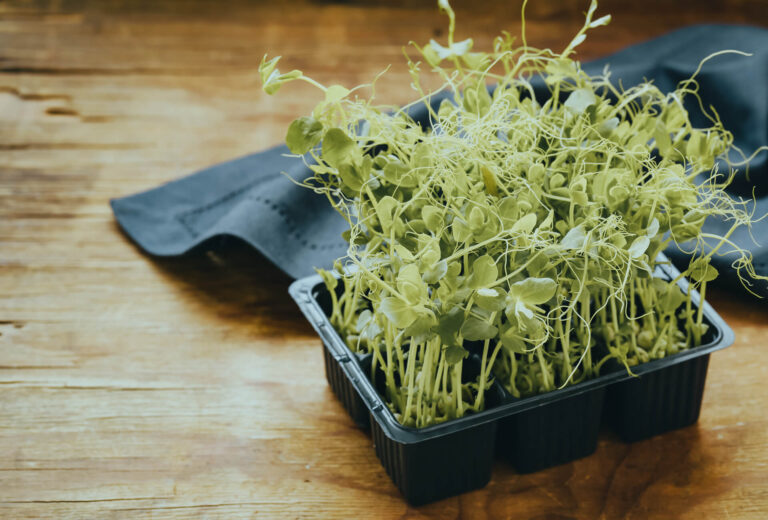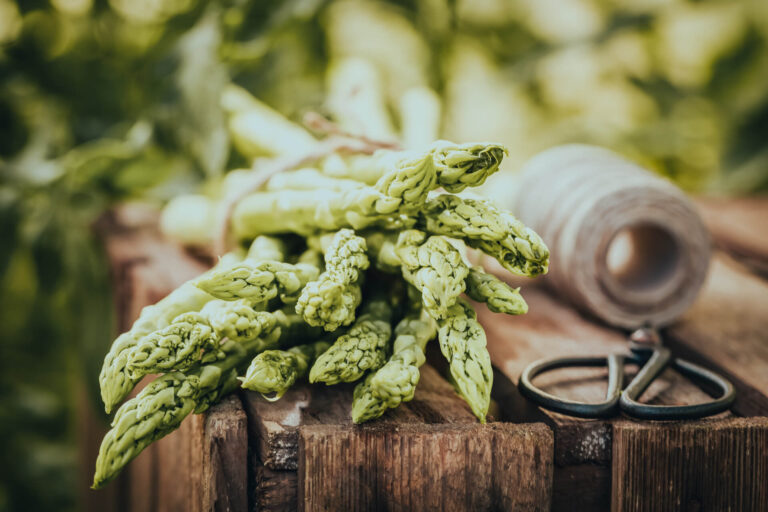The buzzing world of honeybees: a honey production guide
- Our Sustainable Farm (OSF)
How Do Bees Organize Their Colonies And Honey Productions?
Bees are one of the most organized creatures on the earth for their highly efficient social behaviors. Whether it is nest construction, communication, hive environment, defense, honey production, or any task in the colony, it is perfectly managed under the supervision of the queen.
If you think about how bees organize their colonies and produce honey, you can take inspiration from the fact that about 300 bees gather 450g of honey in three weeks, which may take longer in varied conditions.
So, let’s get into the details of honeybees’ families, their family members and see what they offer to the colony for honey production.


Honeybee Family – The Members and Their Roles
Honeybee’s family has thousands of members performing a definite task depending on the age. The combined struggles of all the members make a surviving and reproducing family. In fact, individual bees cannot survive without the support of the colony.
So, here you can meet the members of a honeybee colony and get about their roles:
Queen, the supervisor! Each colony has only one queen except for some swarming preparations. As she is the only sexually developed female in the colony, her primary function is to reproduce, lay eggs, and increase the population.
Early summer and the spring are the peak time for maximum egg production, and she lays around 1500 eggs per day. This number gradually decreases in early October and produces fewer to no eggs until early next spring. On average, one queen can produce up to 250,000 eggs per year and more than a million in her entire life. That is marvelous!
The second major function of the honeybee queen is the production of substances called pheromones that help give her identity as a ‘Queen.’
The queen leaves the colony by herself and flies to mate, usually in the afternoon. The mating partners can easily find and recognize the queen for her special chemical odor. After mating, she comes back to the hive and begins laying eggs in about 2 days. In the meantime, she is constantly fed royal jelly by other colony bees. Similarly, the number of eggs a queen lays depends on the food she receives and the size of the bee force to manage and care for the larvae that emerge from the eggs.
Drones or male bees are the largest bees in the colony and are generally present during the late spring or summer. These are the most jobless honey bee colony members with mating as the primary purpose of their life.
Although they don’t perform any practical work for the colony, their presence ensures normal colony functioning. Drones become sexually mature in a week after they emerge and die instantly upon mating.
An interesting thing you might never know about drones is they rely entirely on other actively working bees for their food. Surprisingly, they eat three times more food than others, and it becomes pretty challenging to manage this excessive food supply in winters.
When the temperature drops in fall, drones are usually forced out into the cold to starve, but some queenless colonies have mercy and allow them to stay in the hive indefinitely.
Workers, the task force! The majority of the colonies’ functions mainly depend on worker bees, and they are the smallest bees in the honey bee family. They do not lay eggs under normal conditions as are sexually undeveloped females.
Instead, they have many other things to do like:
- The worker bees have specialized structures, glands, or pollen baskets that allow them to perform all the hive labor.
- They collect nectar, clean and polish the cells, nurse growing larvae, and take care of the queen.
- Above all, removing the debris, handling incoming nectar, checking the entrance, and maintaining the hive’s ventilation are other tasks that worker bees diligently perform.
Generally, worker bees have a life span of about 6 days during summer but are extended in the fall.

How Do Honey Bees Make Honey – Step-by-Step For Honey Production
Honey bees tirelessly work every single minute to make delicious honey. Here you must know honey bees collect two different kinds of food to make honey. First is the sugary juice from the flowers that is nectar. The second is anthers of flowers containing small grains called pollen.
So, let’s go with a honey bee from flowers to the hive and see what goes on with the food:
When a honey bee has found a good source of nectar, she sucks from inside the flower. She can also visit more than 100 flowers in her single trip. As she sucks nectar, it is stored in her special ‘Honey Stomach.’ Once she feels that her stomach is full, she gets back to the hive and drops off the load. If she feels hungry, she just opens up the valve in the nectar sac and passes the portion of payload through her stomach to be converted to the energy for her own needs.
Many house bees are waiting for the foragers to return and collect nectar from mouth-to-mouth transfer. During this transfer, certain chemicals are added that increase moisture content. It is never favorable to store nectar-like this. So, the bees dehydrate honey before its storage.
They have two ways to do this. Either spread honey over the honeycomb, so the water evaporates or fan their wings. When they fan their wings, airflow increases and water evaporates quickly, leaving behind dehydrated honey.
Lastly, the honey is prepared and its storage time. Honey bees simply deposit prepared honey into the cells of the honeycombs and keep it fresh by capping each cell with the beeswax. It remains safe and fresh until bees are ready to eat it.
Before returning to the flower again for more pollen, she cleans combs and herself to work more efficiently.
After getting the complete procedure of honey production, and the efforts of all colony members, queens, drones, and the working bees, you will surely appreciate tiny bees. But, if you also want to contribute to this procedure, ensure to save nature. Respect your climate and don’t do anything harmful for the plants and beneficial insects. You will see how rapidly bees grow in optimum conditions.



The number of eggs a queen lays depends on the food she receives and the size of the bee force. Drones, male bees, are the largest bees in a honey bee colony, primarily mating during late spring or summer. They rely on other bees for their food, eating three times more than others. In winter, drones are forced to starve, but some queenless colonies allow them to stay indefinitely. Worker bees, the smallest bees in the honey bee family, perform various tasks, including collecting nectar and pollen from flowers.
Honey bees have a lifespan of about six days during summer and extend in the fall. Honey bees store nectar in their special ‘Honey Stomach’ and convert it to energy. They dehydrate it before storage using either spreading it over the honeycomb or fanning their wings. The honey is then stored in honeycombs, ensuring freshness until bees consume it. To support honey production, bees must respect their climate and avoid harmful actions.

Summary
Bees are highly organized creatures with efficient social behaviors, such as nest construction, communication, hive environment, defense, and honey production. Their families consist of thousands of members, each with specific roles. The queen, the supervisor, is responsible for reproducing, laying eggs, and increasing the population. She can produce up to 250,000 eggs per year and over a million in her lifetime. The queen also produces pheromones, which give her identity as a queen.

